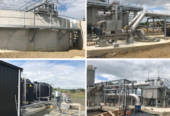The wheels on the bus go round and round the Waikato region in a vote of confidence in public transport by the region’s territorial authorities that should have patrons beating a path to the bus stops.
But as I found one day last week, there is still a lot of work to do to get people out of their cars and onto the buses.
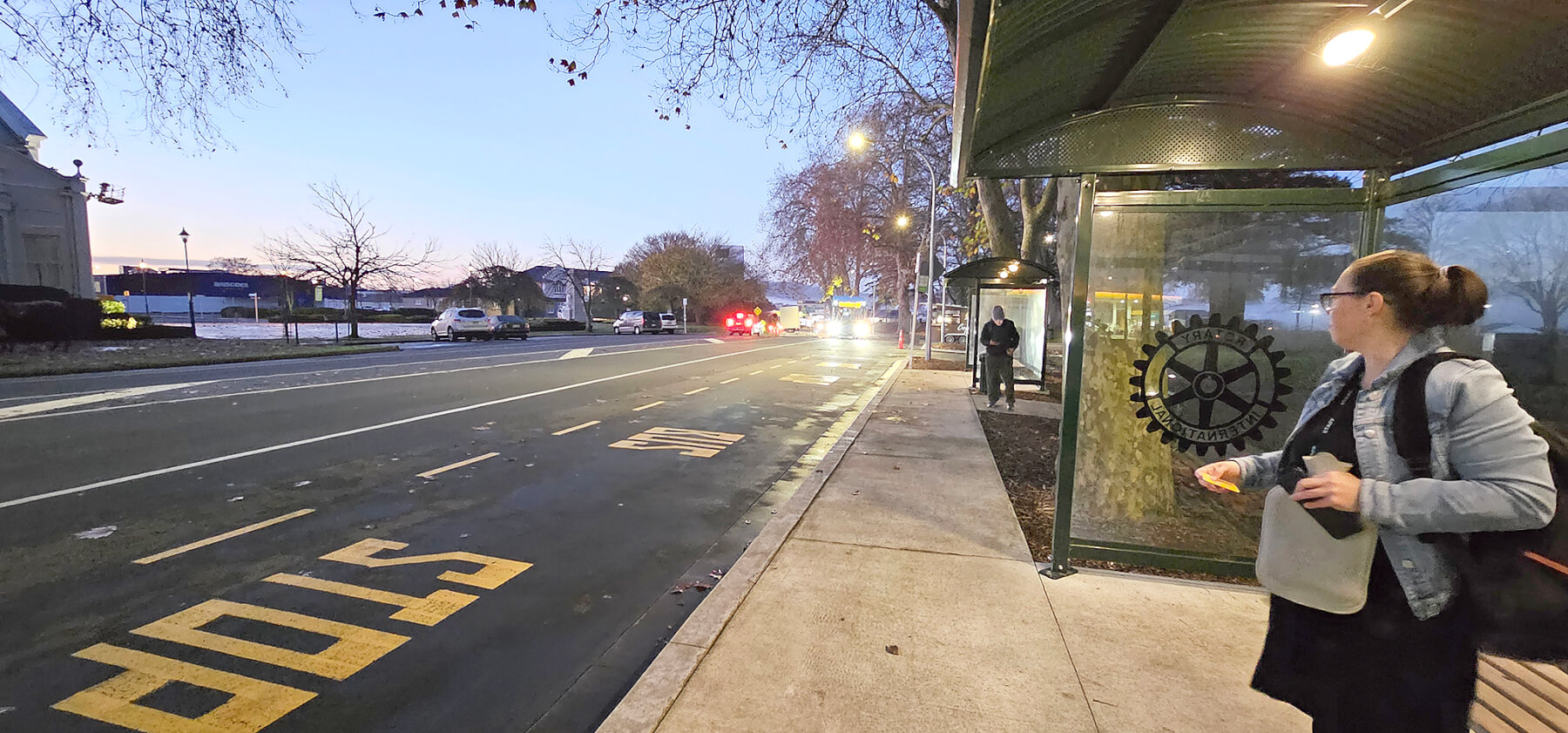
Out of the gloom comes the number 20 bus from Cambridge to Hamilton.
It is 6.55am and there are three of us waiting at the Cambridge Town Hall for the number 20 bus to Hamilton. One of them, a young woman, is holding a hot water bottle but the water is cold, she tells me.
So that is a tick for the heating on the bus which three minutes later appears out of the gloom coming towards us, right on time as every bus that day was.
It is my first trip on one of the five new fully compliant and operational electric buses in the fleet servicing Waipā’s regional bus services in Cambridge and Te Awamutu.
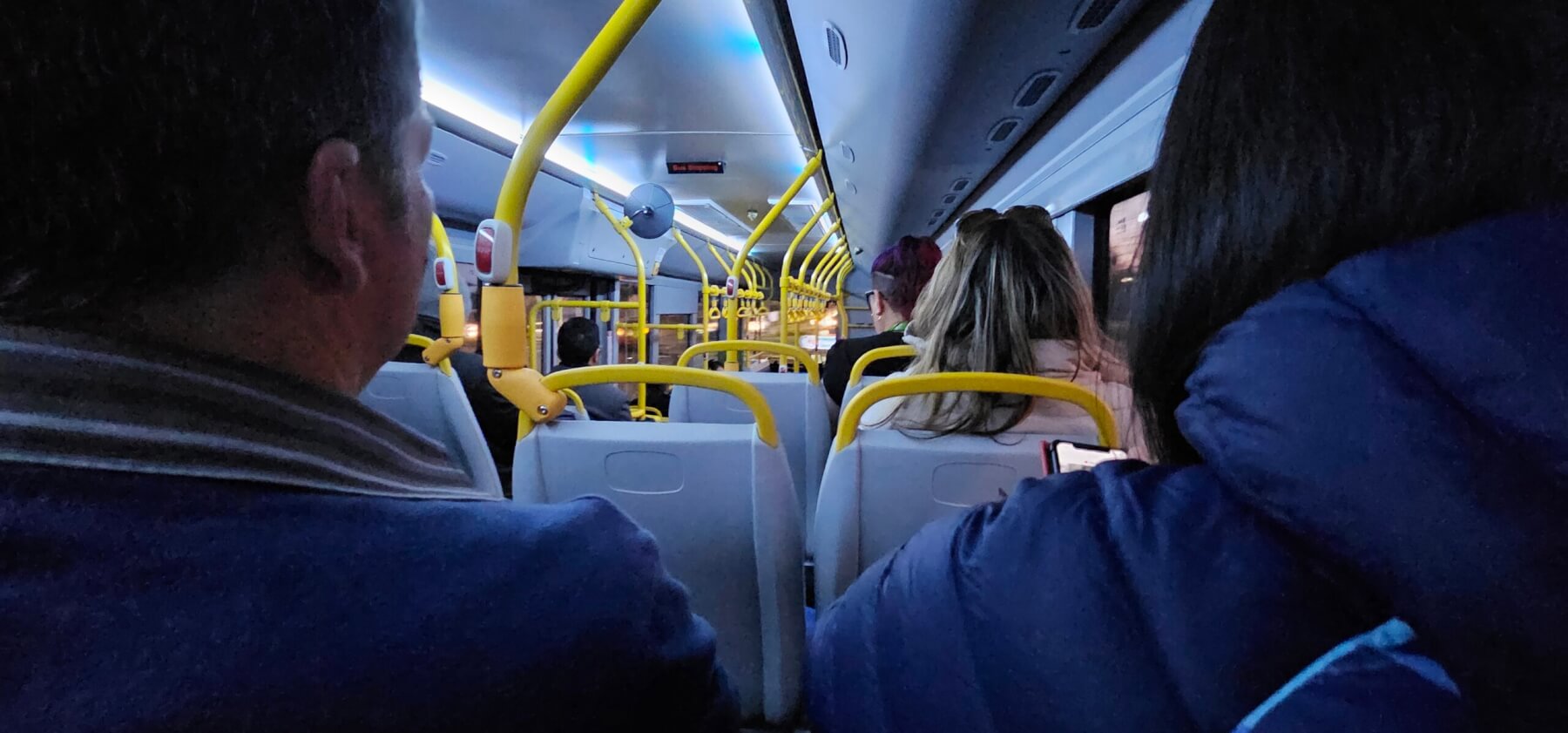
Last stop in Cambridge before the Velodrome.
Waipā’s improved timetable requires six single and two double-decker buses.
The old diesel buses had wi fi and it is just as erratic on the electric version. A word to the wise – if you are expecting the regional bus services will allow you to download movies and the like, think again.
But the USB ports at each seat were a lifesaver for me as my mobile was not fully charged and if I wanted to listen to podcasts for the rest of the day, it needed a boost.
There are 28 on the bus – too early yet for the students and a word of warning – avoid the 3.30pm bus from Hamilton to Cambridge in summer if that pungent smell of adolescent schoolboy disagrees with you.
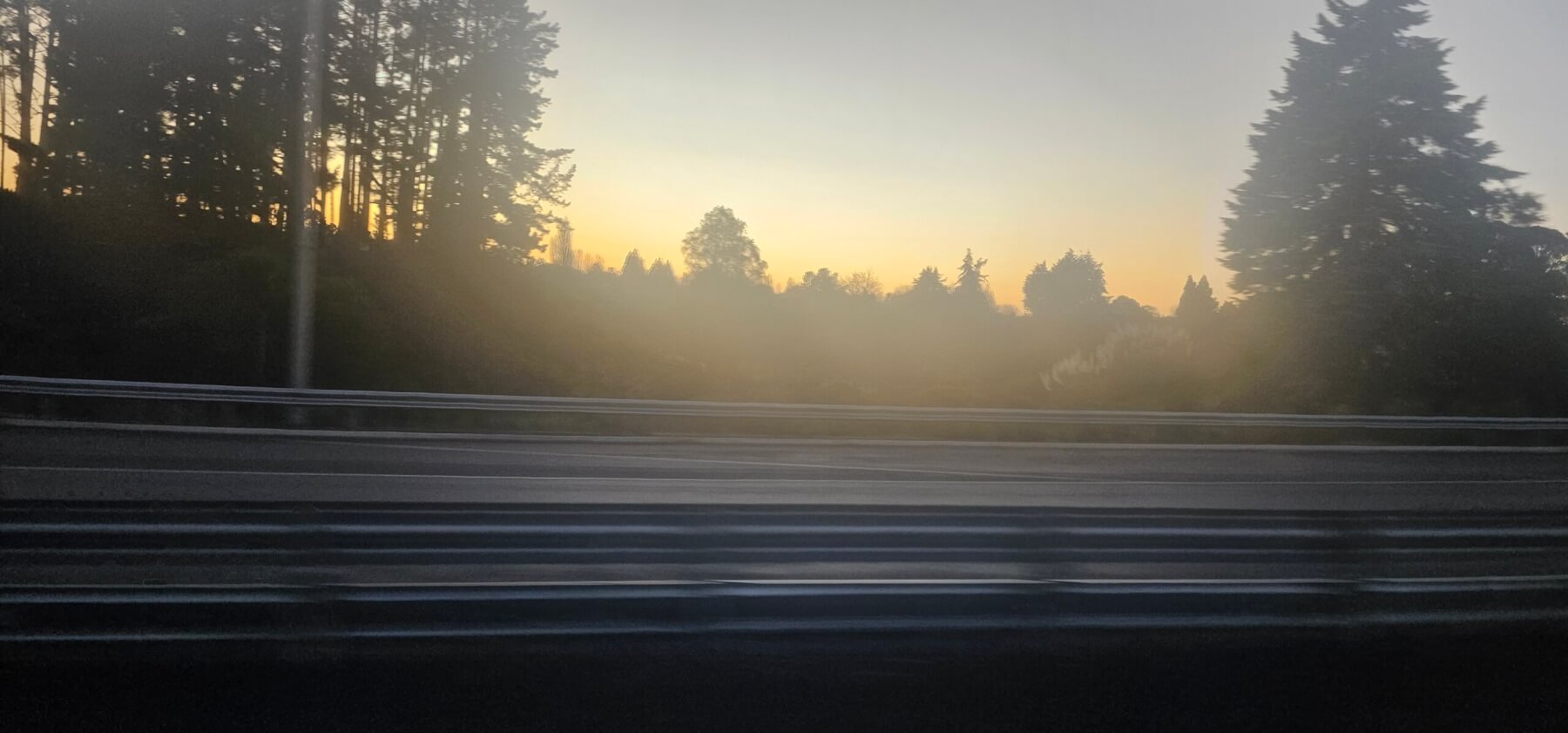
The sun rises as we come off Waikato Expressway towards Hamilton.
The seats are comfortable, the driver has the radio playing but most passengers have their own headphones or ear buds.
There are a couple of incidents to make this newshound curious. Police cars are outside the Hillcrest Four Square either waiting for the shop to open or pursuing a conversation with the two people standing in front of a red car.
That is the thing about bus rides, you fleetingly see something from the window, but you are never sure how it ends.

Mystery at the Four Square?
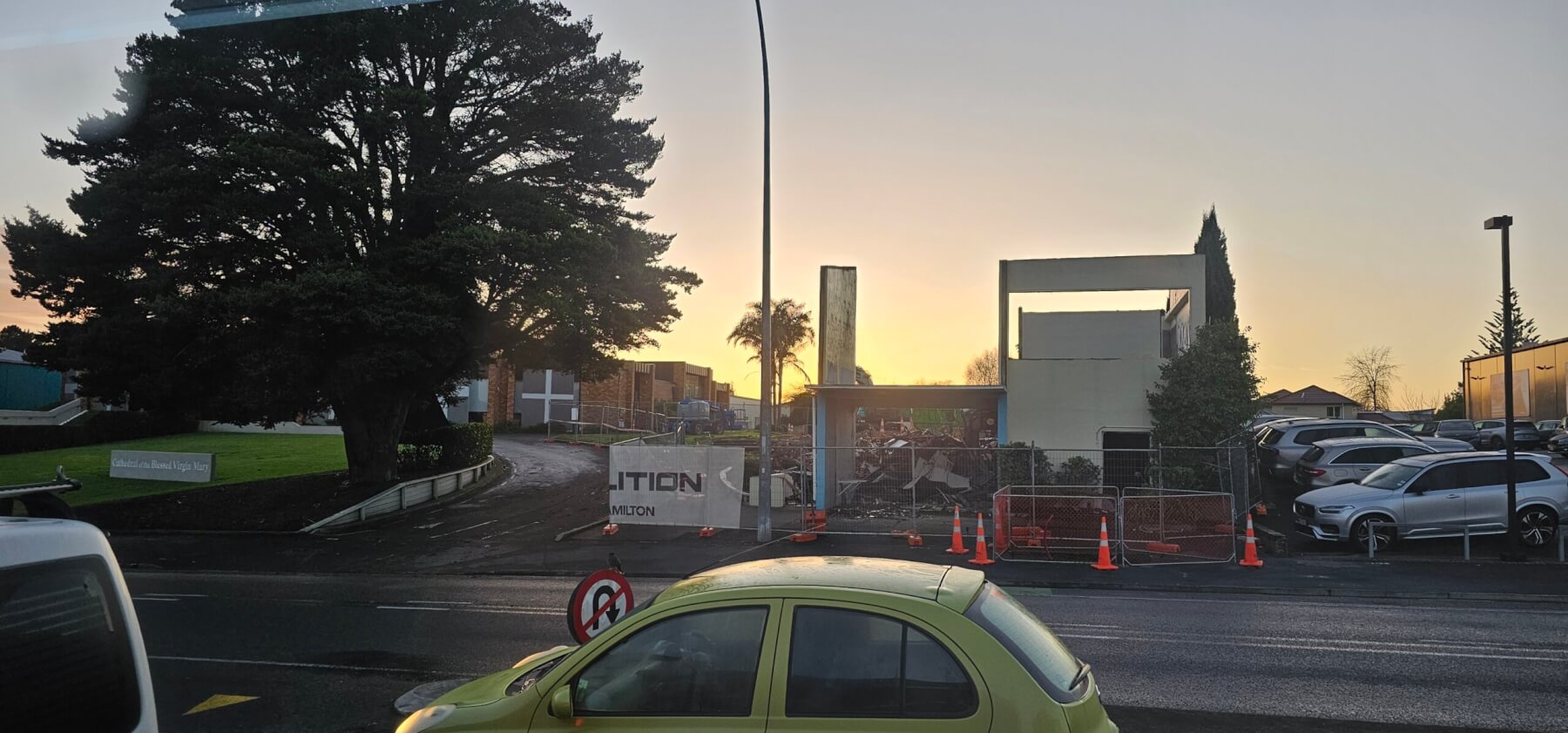
What’s going on next to the Catholic Cathedral?
The second incident involved a man who got on the bus outside Anglesea Clinic carrying a box of cider and a can of something which he denied to the driver was alcohol.
When we arrived at the Transport Centre on time at 7.43am, he is met by security staff who must have called the police because a few minutes later, two police cars turn up to chat with him and he then had to empty cider out of every can in the box before he was sent on his way.
You cannot drink alcohol on the buses, nor can you spit, swear, eat, drink, smoke, vape or put your feet up on the seats.
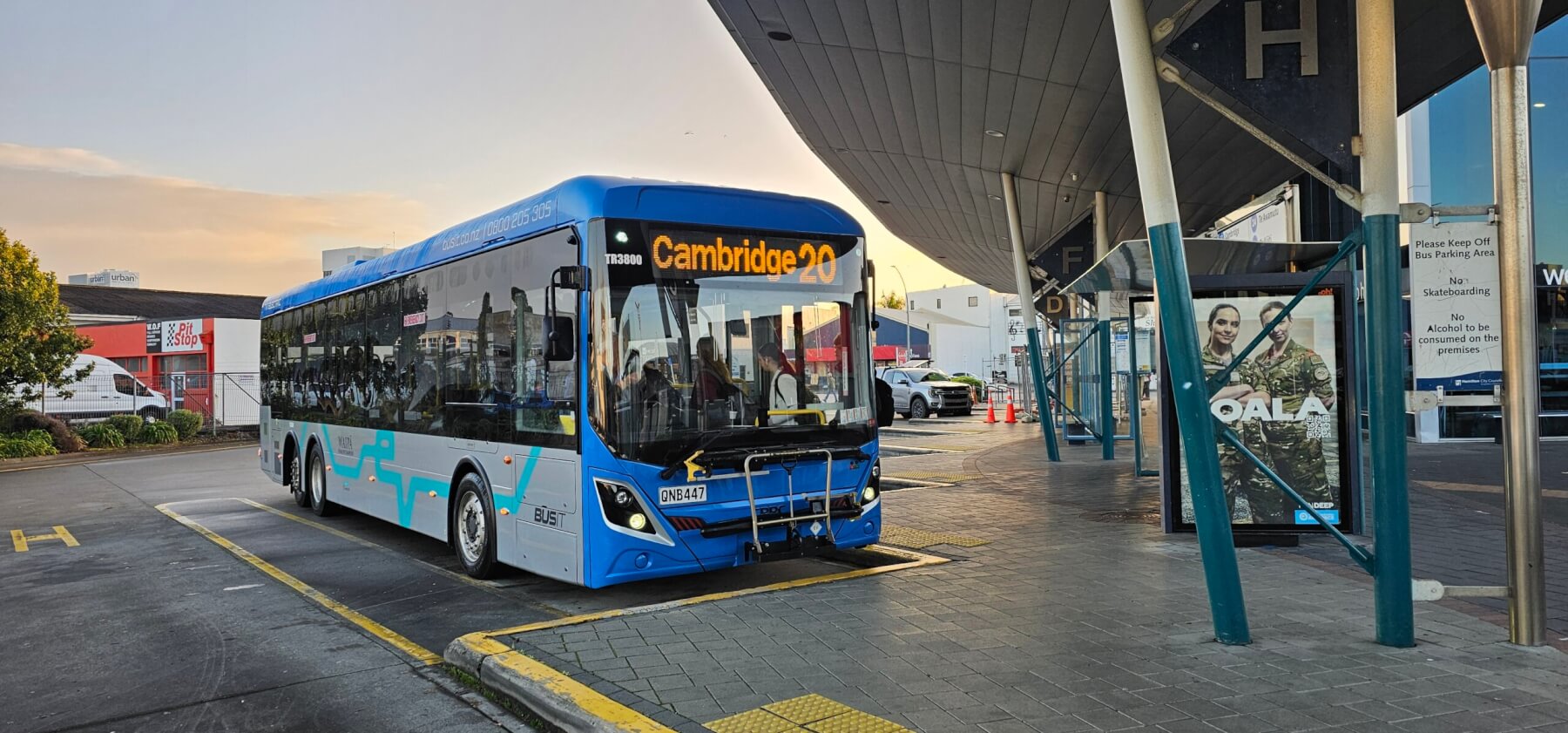
The Cambridge bus arrived on time at the Hamilton Transport Centre.
You are not allowed to loiter around the Transport Centre either and I was conscious I might be on security’s radar as I waited for the Te Kūiti Connector 26 to arrive and saw other connector services from Raglan, Te Kauwhata and Huntly arrive. I’m too early for the South Waikato Connector from Tokoroa.
Passengers got on at the Te Kūiti i-Site at 6.40am and I was interested to see how many got off at 8.15am at the Transport Centre given the service’s limited timetable. There were 27 – a mix of secondary school students and public – plus a bike tethered to the rack at the outside front which its owner removed and cycled quickly away.
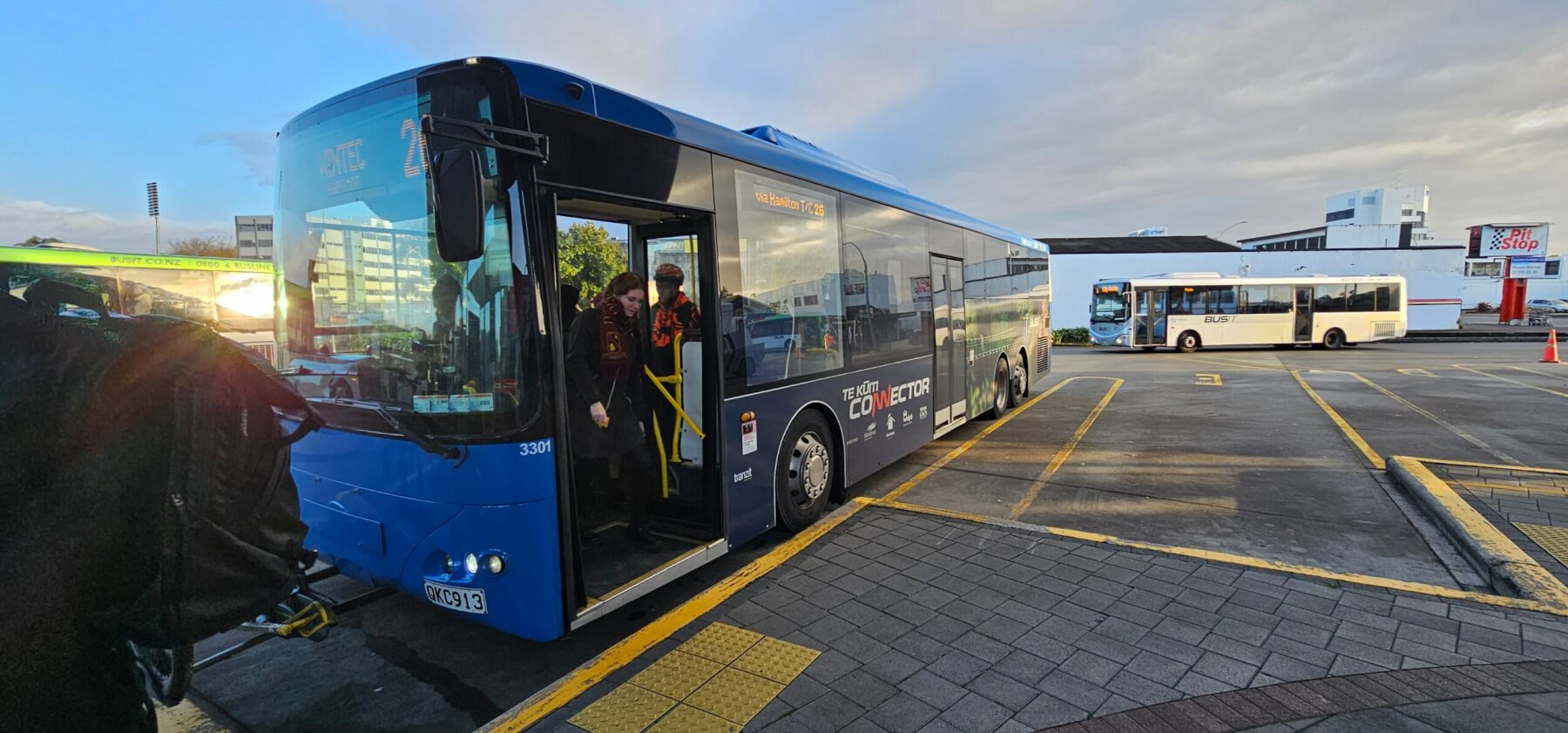
Te Kuiti Connector arrives at the Hamilton Transport Centre.
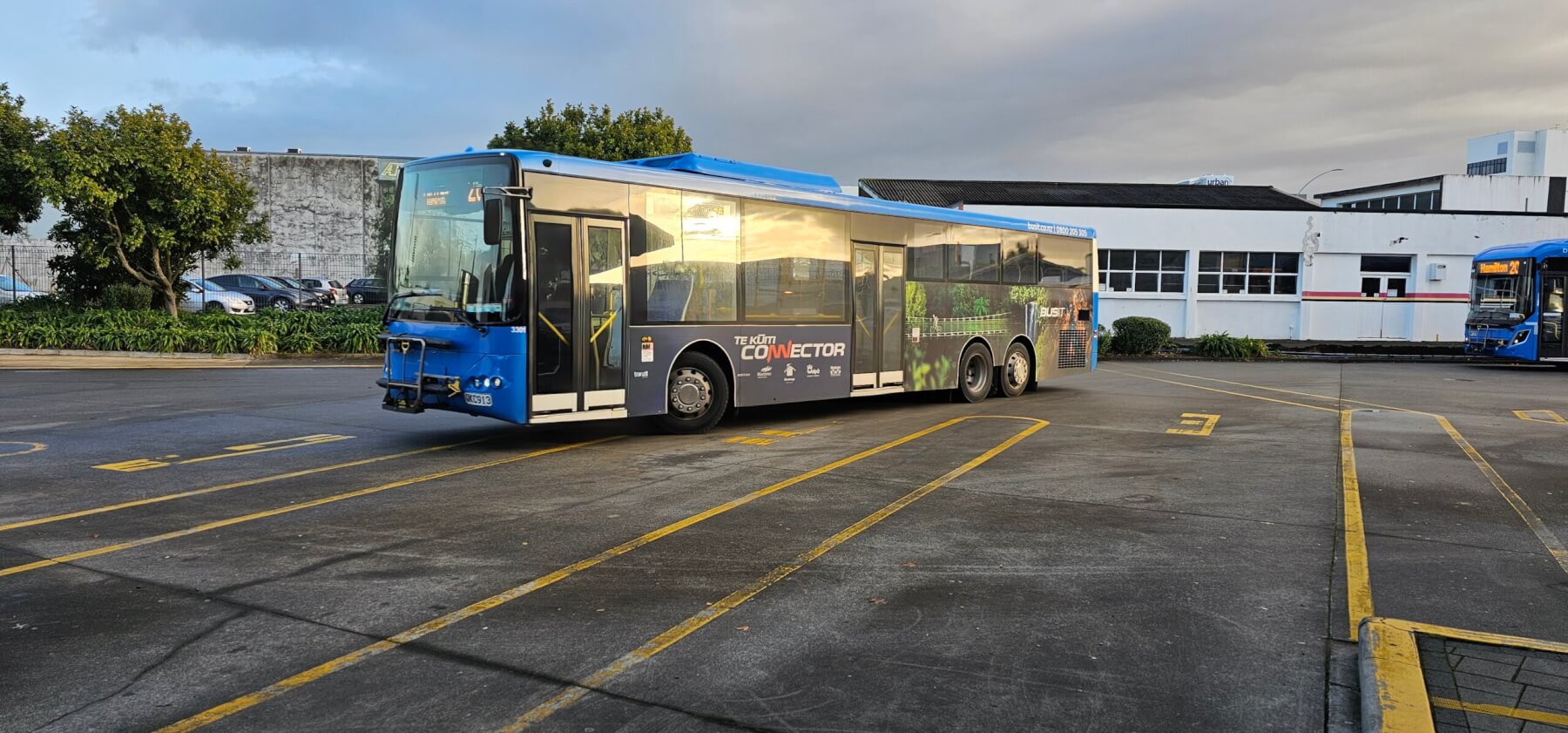
The Te Kuiti Connector heads off to Wintec Rotokauri with no passengers onboard that we could see.
The bus continued onto Wintec Rotokauri with no passengers that I could see and later that day – at 5.15pm – returned to Te Kūiti; arriving back in the King Country at 6.47pm.
I catch the 8.25am Te Awamutu 24 service – one of the old diesel buses still in service – bound for Kihikihi.
There are only three of us on the bus.
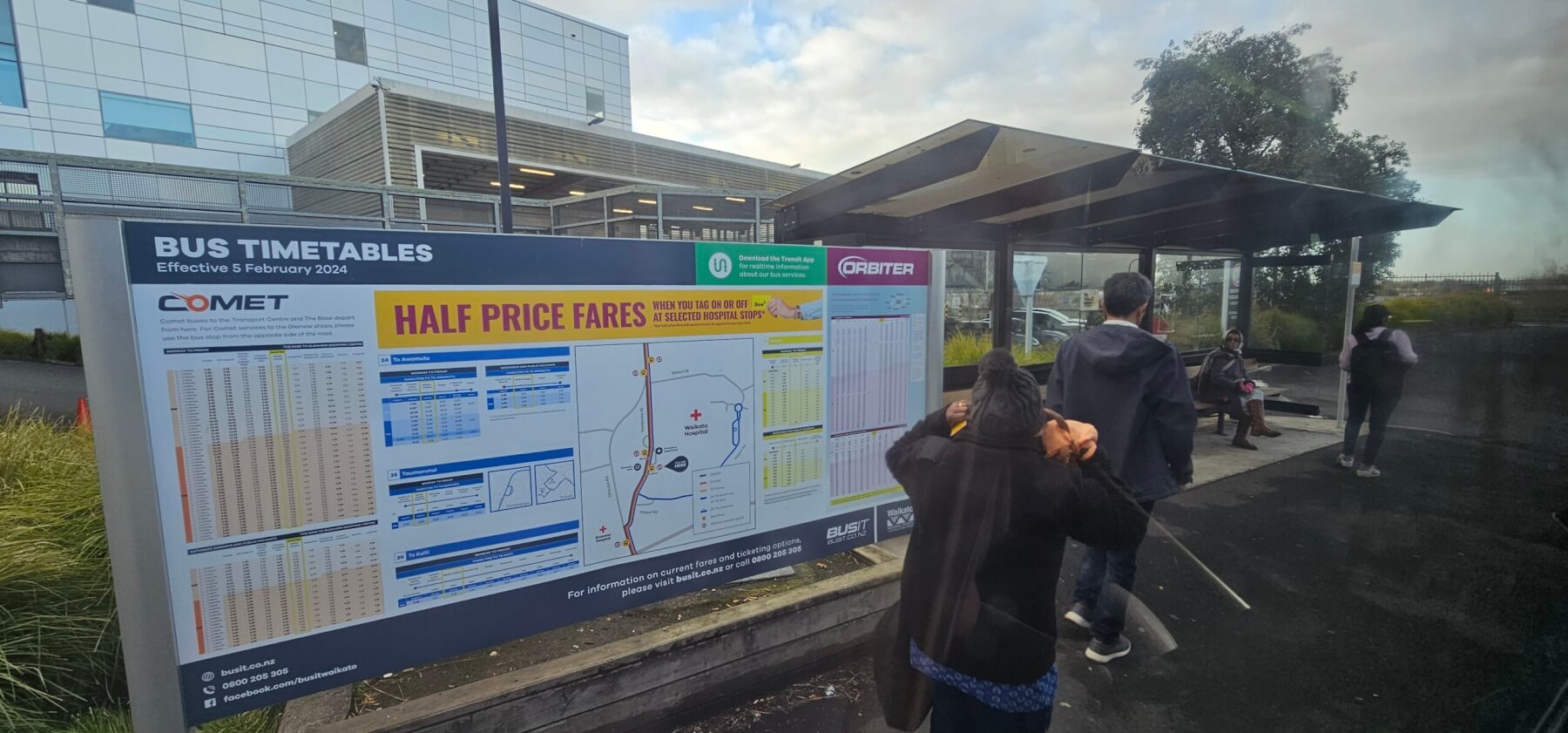
Waikato Hospital, a popular spot for its half price fares incentive.
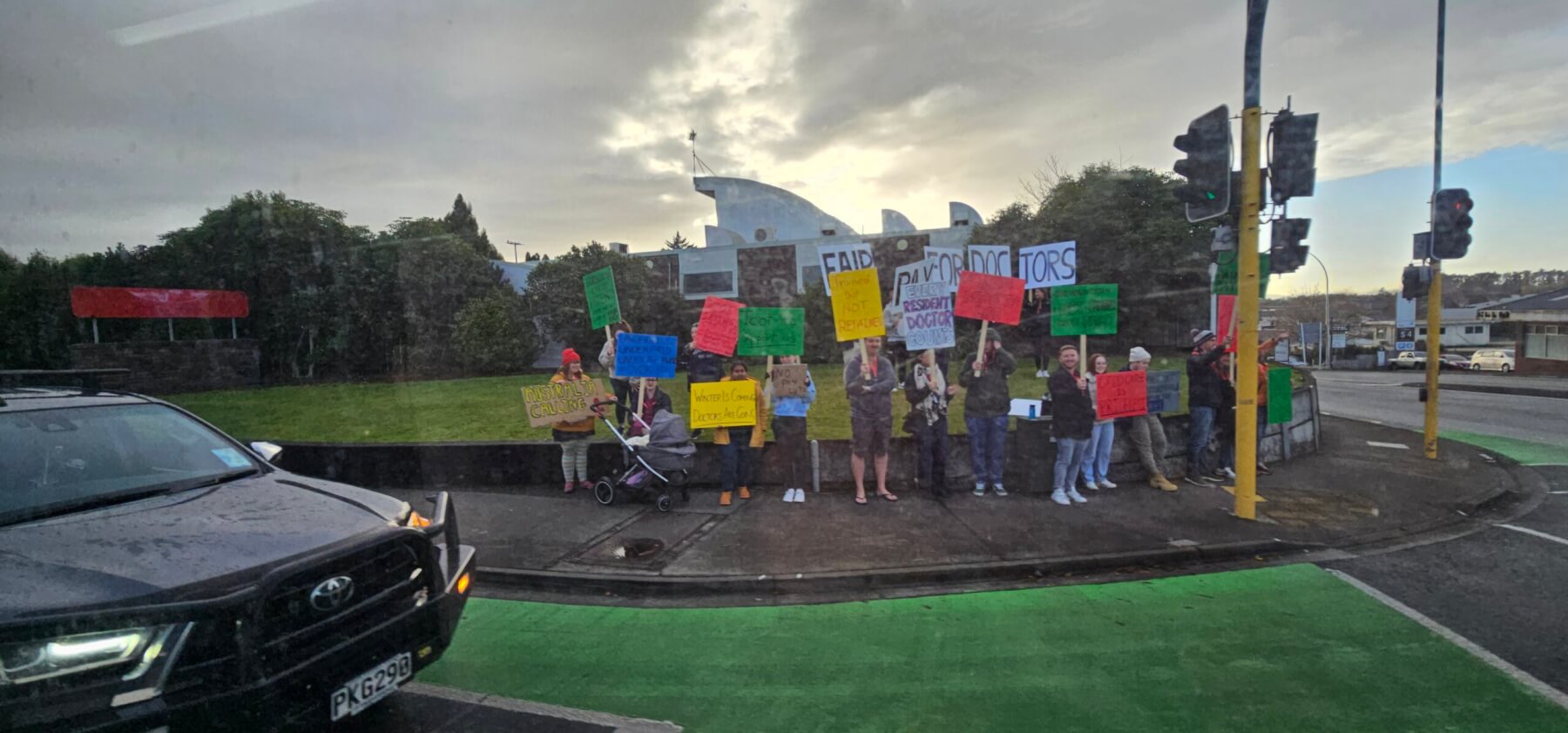
Toot Toot for the resident doctors.
The driver toots his horn as he passes resident doctors protesting outside Waikato Hospital. The trip to Te Awamutu goes smoothly and then it’s just me to Kihikihi where we arrive at 9.18am having taken a detour around the west side of the village while roadworks continue.
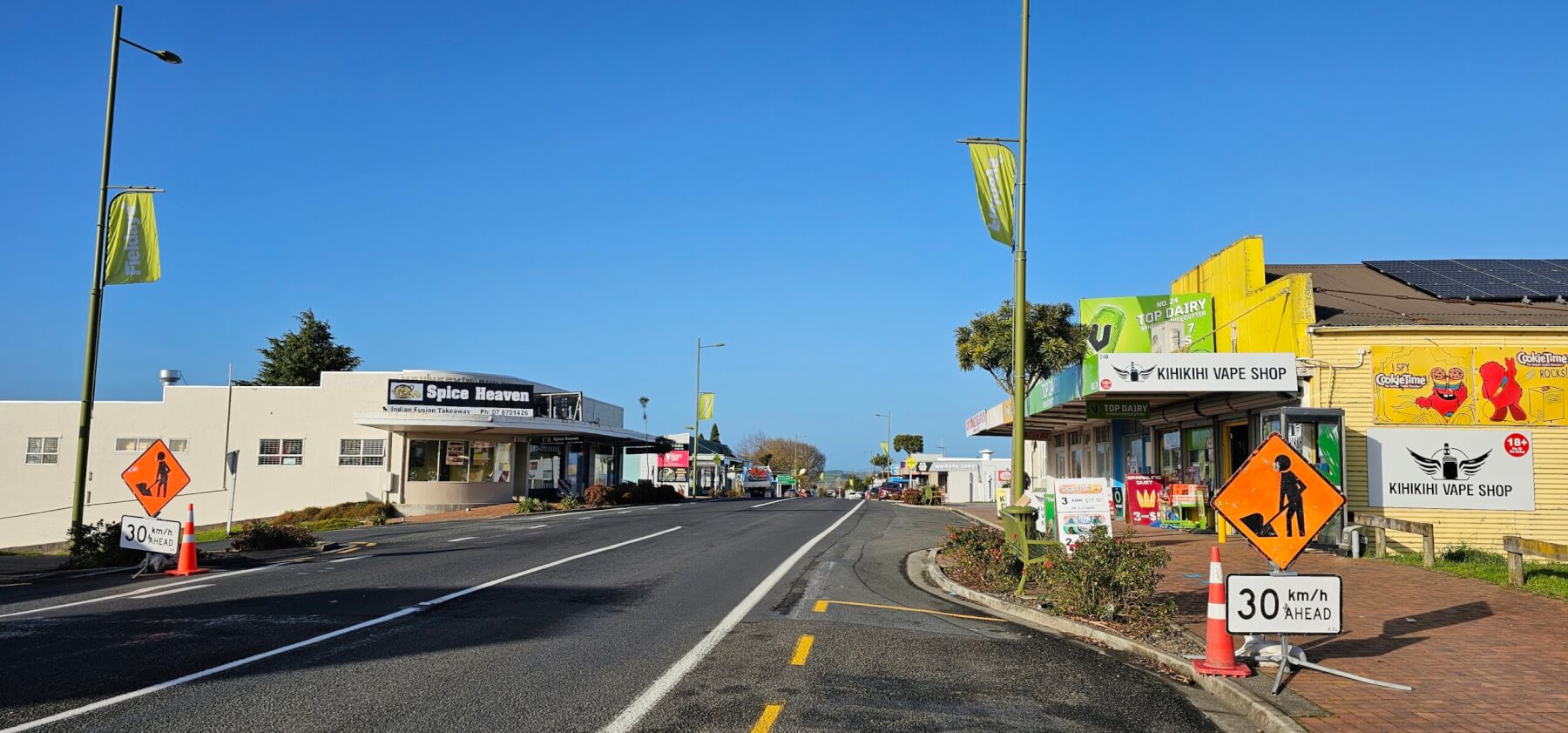
Kihikihi
We leave Kihikihi at 9.45am with another woman onboard who was heading into Te Awamutu for some shopping. She, like me, has her gold card loaded into her Bee card so the trip is free. The balance on mine has stood at $13.80 since my 65th birthday.
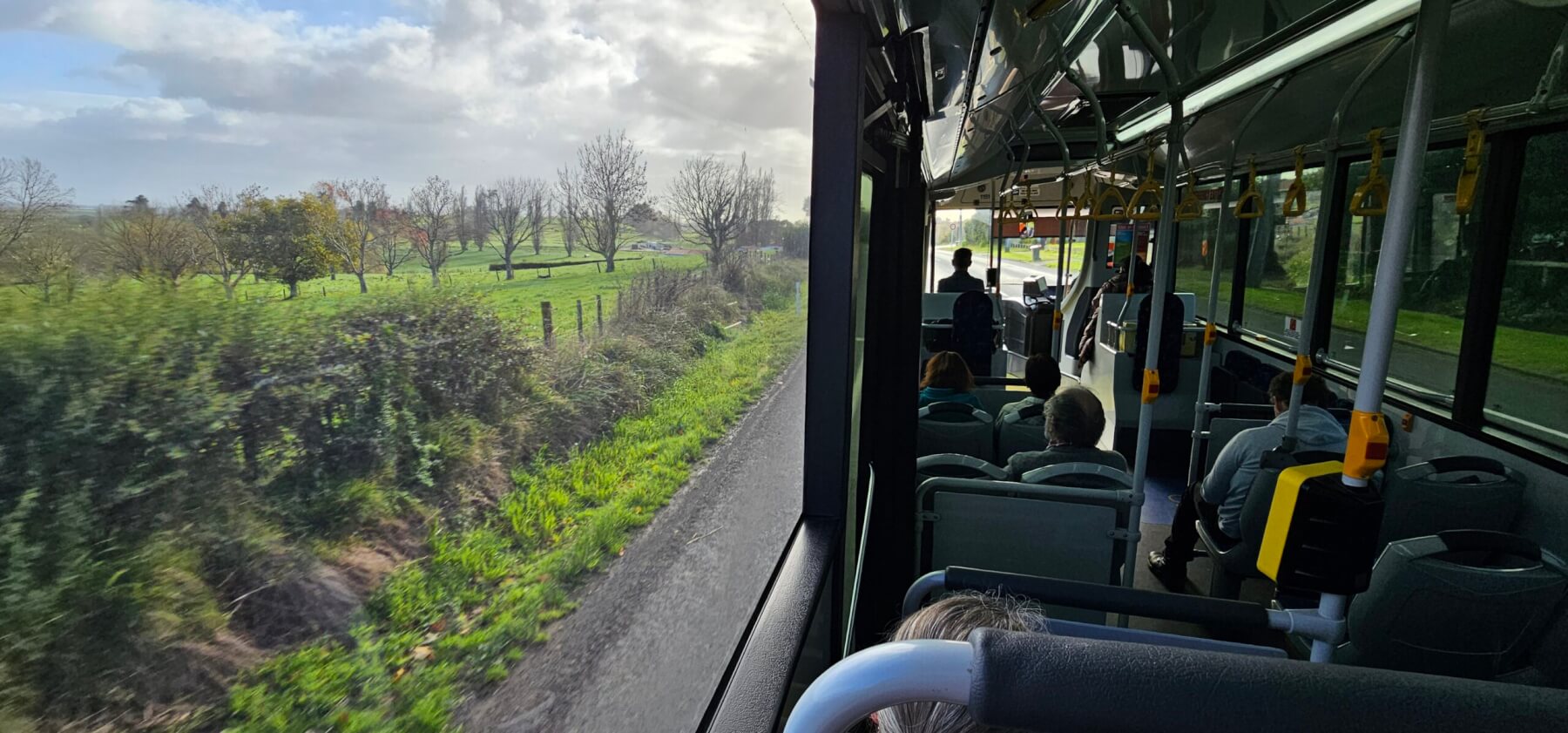
We leave Te Awamutu and head through the Waipa countryside to Hamilton.
Eleven get on in Te Awamutu – most get off at the hospital – and then back to the Transport Centre on time at 10.24am. I even had a snooze en-route.
On arrival, I check the timetable and decide to treat myself to a coffee and cake and a walk around the shops before catching the 11.45am bus back to Cambridge.
It is a diesel too but still quite comfortable if not as environmentally-friendly as the electric version.
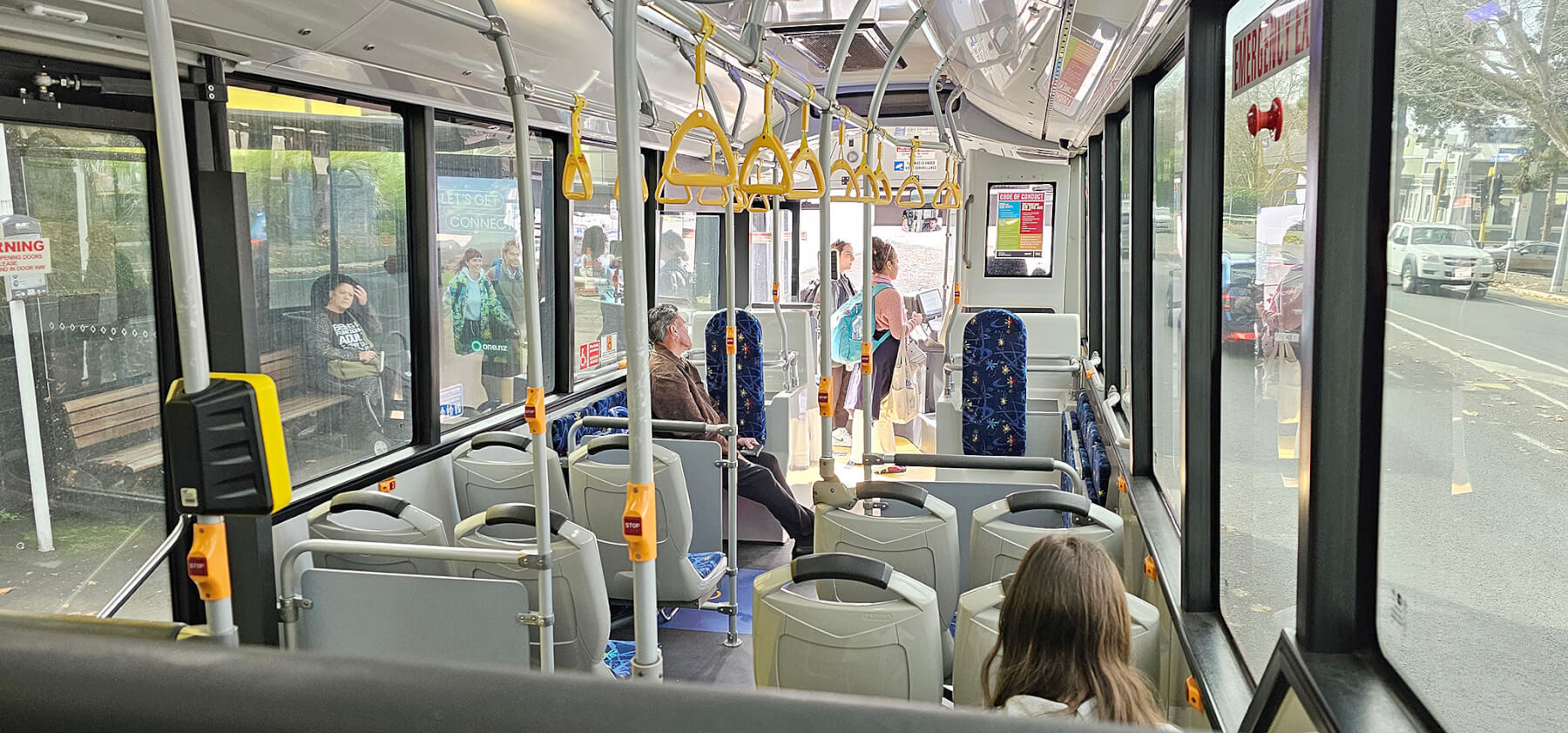
A busy stop is the one opposite Hamilton Police Station where three Spanish speaking women hopped onto the Cambridge bus.
Three Spanish-speaking women hop on opposite the Police Station fumbling with money in confusion. They get off in suburban Hillcrest.
Again, the curious part of me wonders who they are and what they are going to do now?
Heading into Cambridge, we bump and rattle over the various road humps which have sprung up between the Velodrome and town and the bus pulls into the new non-compulsory stop just past Kelly Road because there is a man sitting in there.
But annoyingly, he is just talking on his phone.
Bus stops, sir, are for waiting for buses and are not telephone booths!
Right on time, we arrive in Cambridge, and I get out in front of Good Union. It is not clearly marked as a bus stop but is for the moment.
The motor on the bus goes vroom, vroom, vroom and off it goes in a trail of diesel smoke.
And the wheels on the bus go round and round, all through the town.
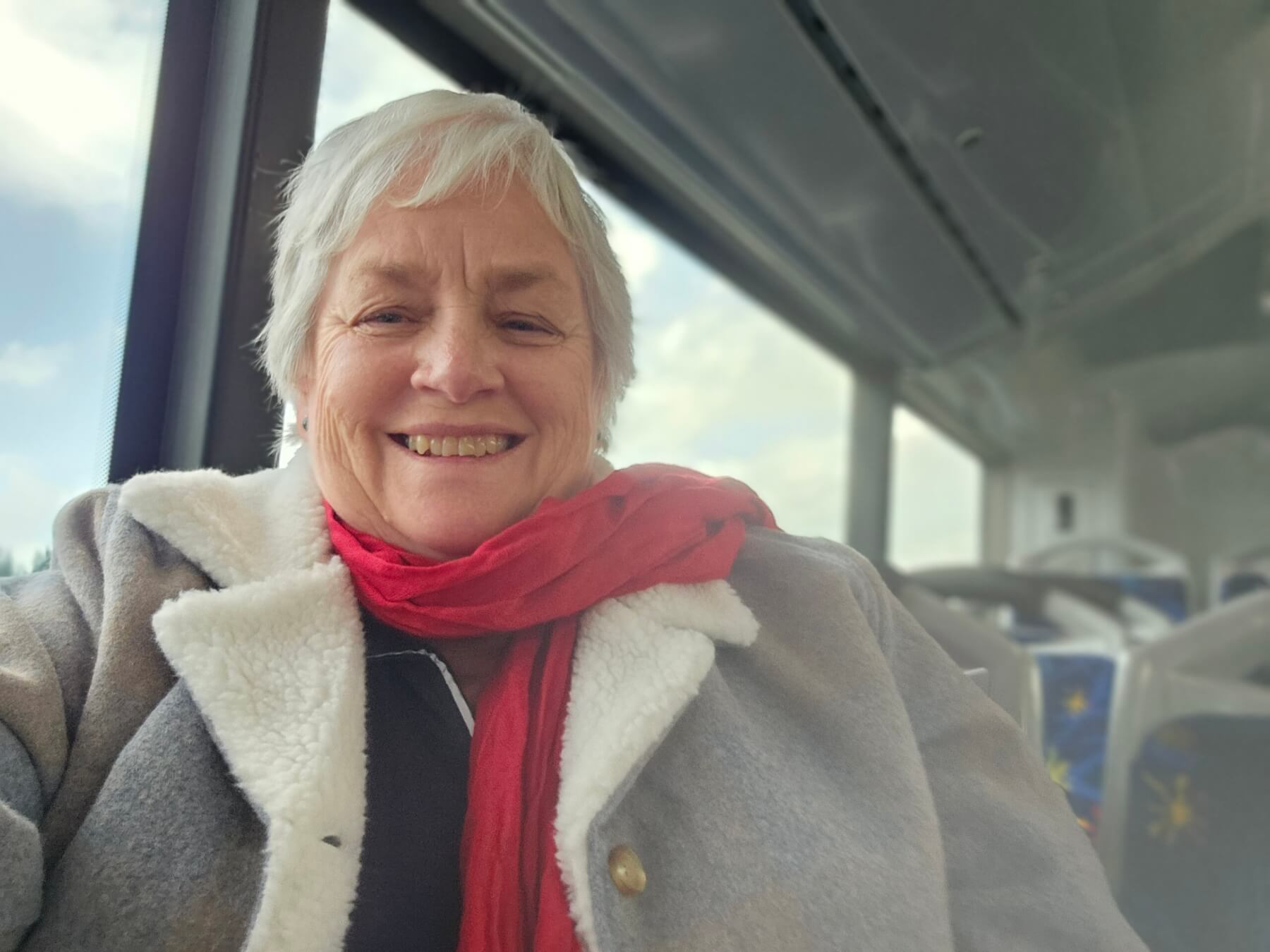
Senior writer Mary Anne Gill en route on the regional bus services.






